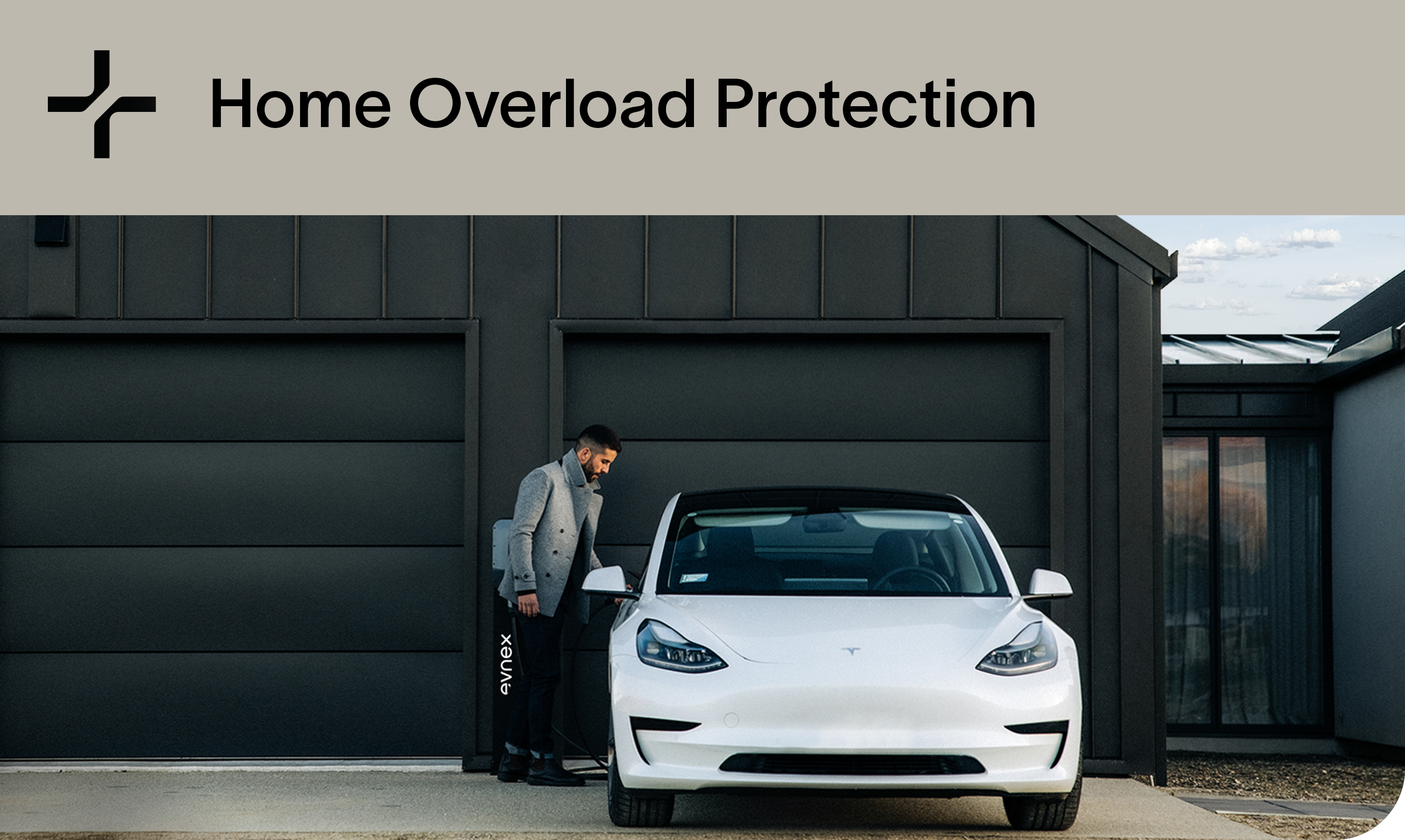Home Overload Protection
Understanding Evnex's home overload protection feature.

1. Safely Charging Your EV at Home
Electric vehicles are energy-hungry and can easily overload your main house circuit when charging during the use of other high-power appliances like inductive cooktops, heat pumps, and spa pools.
To avoid this issue, residential Evnex chargers are installed with home overload protection. This feature will slow or pause a charging session if your total power usage nears your building’s maximum draw by autonomously monitoring your home’s total energy use via a power sensor. It balances the need for fast charging speeds while preventing the risk of blowing your main fuse due to EV charging.
2. How Does Home Overload Protection Work?
During the installation, an electrician will set a maximum current limit for the EV charger and fit a power sensor (CT) to the building’s mains supply to monitor the entire building load; linked via a 1 or 3 pair (depending on type of supply to be monitored), overall screened instrumentation cable, rated appropriately to be run into the switchboard (230/400VAC).
The power sensor will read the total energy draw of the building at 50 times a second to ensure it is not within 10% of its maximum rated limit. If the overall power demand of the home reaches this threshold while the charger is active, it will dynamically lower the rate of charge in a fraction of a second.
As your household power demand fluctuates, your charger will continue to adapt its rate of charge until either stopping the charge completely or returning to a normal when safe to do so.
3. How Do I Use This Feature?
All residential Evnex smart chargers are currently installed with home overload protection as standard. There's nothing for you to do, this feature will be active after the charger is commissioned and give you peace of mind for safe charging at home for years to come.
Updated about 2 months ago
Discover more smart features your EV charger has to offer...